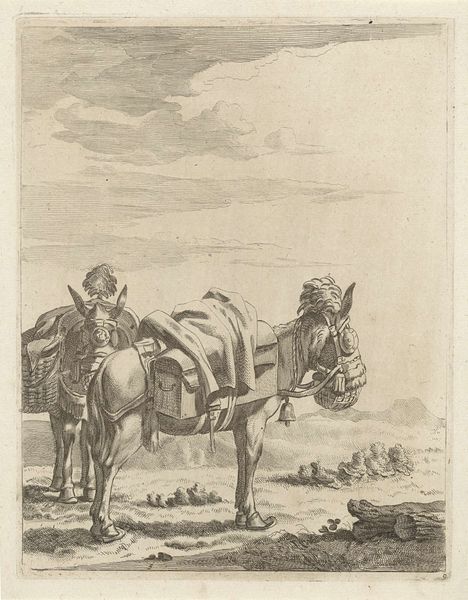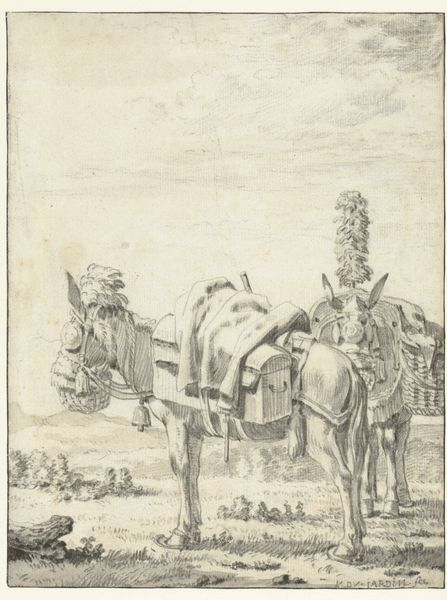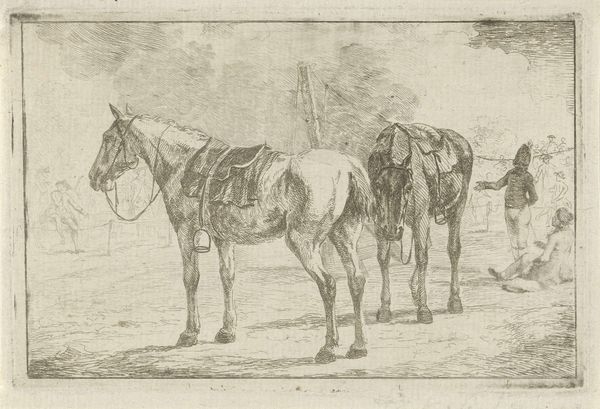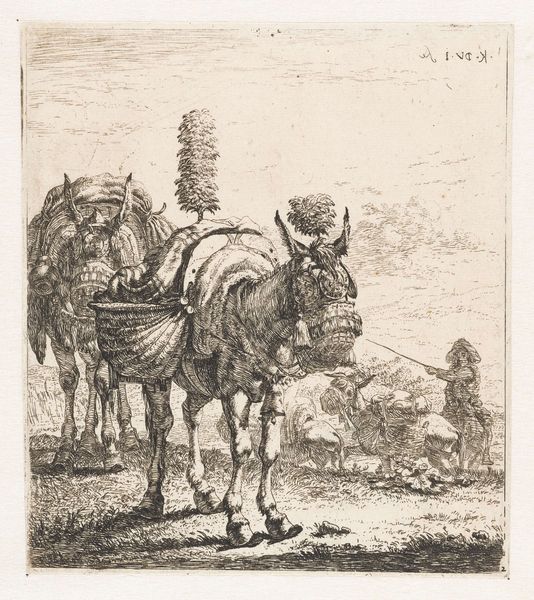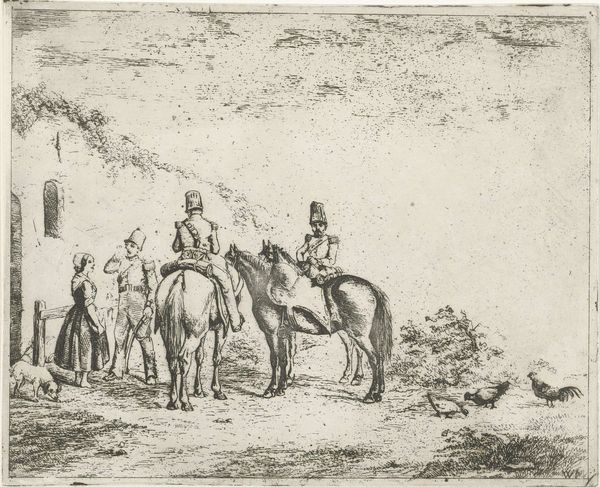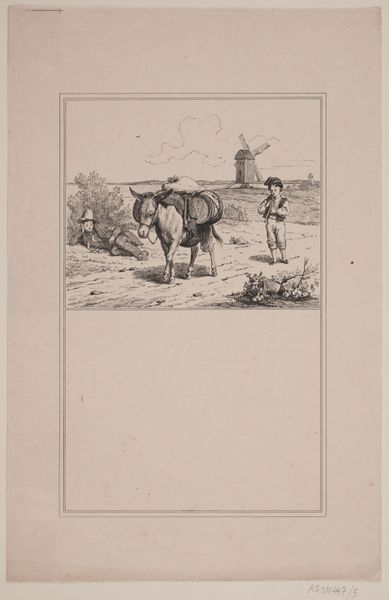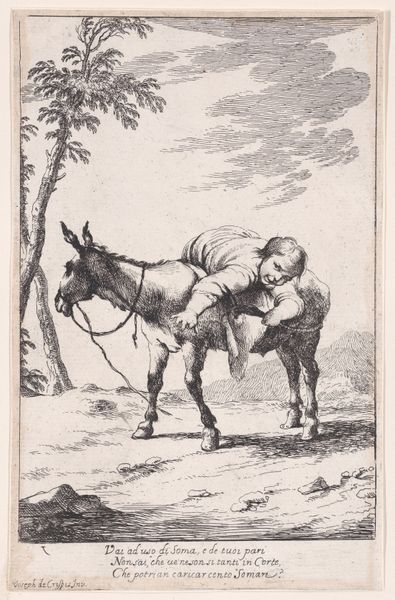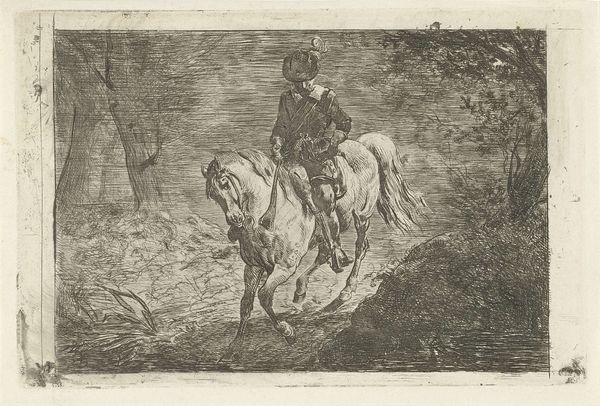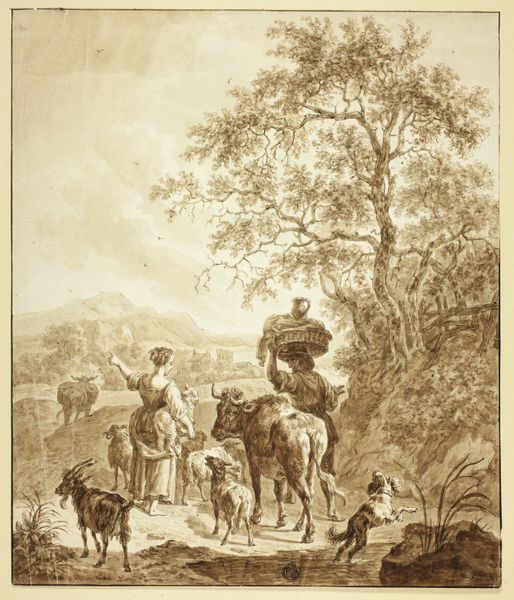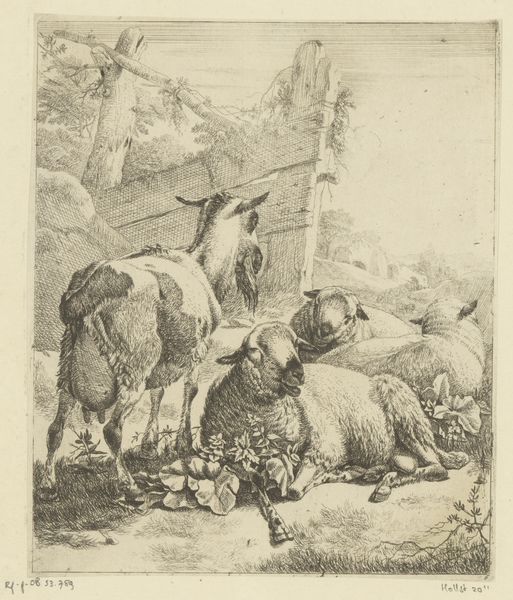
drawing, etching, paper, ink
#
drawing
#
baroque
#
etching
#
dog
#
landscape
#
figuration
#
paper
#
ink
#
coloured pencil
#
horse
#
genre-painting
Dimensions: height 179 mm, width 150 mm
Copyright: Rijks Museum: Open Domain
Editor: This is "Ruiter met twee paarden en twee honden," or "Rider with two horses and two dogs" by Cornelis A. Hellemans, dating somewhere between 1650 and 1699. It's an etching, so mostly ink on paper. I’m immediately struck by the texture—it feels very linear and open. What do you see in the composition that stands out to you? Curator: The most compelling element is how Hellemans utilizes line to create both form and texture. Observe the density of lines around the horses’ bodies compared to the relative spareness in the sky. Do you notice how this contrast creates a sense of depth and volume despite the limited tonal range? Editor: Yes, the varying density of the lines really defines the shapes and suggests light and shadow. The landscape feels almost secondary because of that, more sketched than fully realized. Curator: Precisely. The artist uses a kind of shorthand, focusing the descriptive energy on the animals. Notice the positioning of the rider—almost an afterthought perched atop the horse. This positioning affects the visual hierarchy, shifting the emphasis. What impact does this imbalance produce? Editor: It feels less about a grand figure, more about a casual observation of rural life. It also feels very much of its time. You wouldn’t necessarily think much about the social implications, but the materials alone—etching rather than oil, say—really say something about its original context and consumption. Curator: A shrewd observation. Etching allowed for relatively inexpensive reproduction and broader distribution. Consider then, how the work, through its linear qualities, implies and comments on broader landscapes beyond just that immediate setting. Editor: So, it’s less about the grand Baroque landscape, and more about an understated comment on everyday life made accessible through printmaking. That is an interesting perspective shift. Thank you! Curator: Indeed, the power is not merely in the representation, but also in the medium itself.
Comments
No comments
Be the first to comment and join the conversation on the ultimate creative platform.
